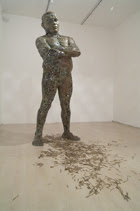Having discussed the various kinds of prints and the terminologies associated with them, we now look at the factors that need to be considered before investing in prints. There is a line of thought that believes that one should start investing in art with prints, since costs are less, and as you gain knowledge and confidence over time, you can start investing in original works. On the other hand, some people believe that since offset prints are produced in large quantities they serve only a decorative purpose and have a negligible investment value. Therefore, inves-tors must be careful to pick up prints that will appreciate over the years.

courtesy: affordindianart.com
The golden rule to follow when buying a print is to look for one that is produced in limited numbers. An ideal number would be 10 to 20, and you must look for artists who produce such prints. In fact, there are a few artists who make only 10 edition prints and then also sell the print plate painted, so no further prints can be taken. Another thing to watch out for is the 'platemark' and the counter signature of the artist. Very few artists give out authenticity certificates for etchings, however getting one helps.
Art consultant Umesh U V says that from an investment point of view, some intaglio etchings are appreciating in value sharply. Artists Laxma Goud and Viraj Naik’s works are popular with investors. Some of them are even showing a growth rate of about 50 percent every six to nine months. The resale value of a print is generally very good but depends heavily on the subject of the image. For instance, Laxma Goud's 'goat and woman' series are most sought-after. Similarly, Viraj Naik's mystic creatures and Rini Dhumal's emperor series are good investments. Also, serigraphs by Raza and Ramkumar are coveted while Husain's smaller edition serigraphs do well. The trick then is to do a proper research and consult experts before investing in prints. There have been numerous cases where posters have been passed off as limited edition prints. In fact, there have been instances where such posters have been sold for more than Rs 25,000 to unsuspecting buyers. It is therefore important to know the difference.
(Published in Financial Times, Bangalore)



